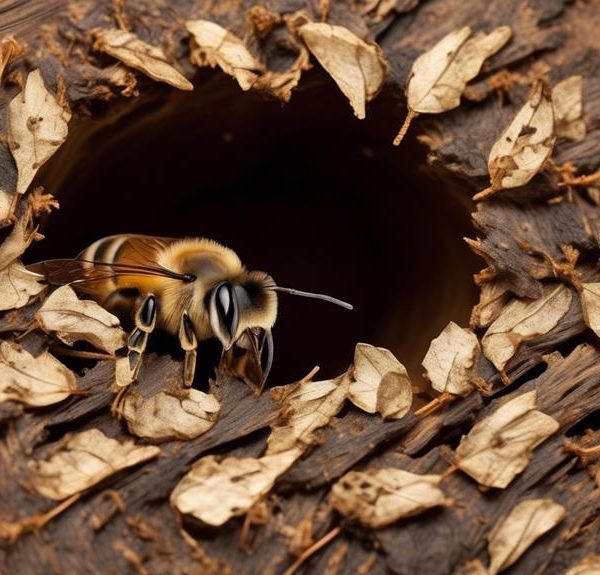Journey with us to learn fascinating ways to attract leaf cutter bees, nature's tiny yet crucial gardeners, to your yard.
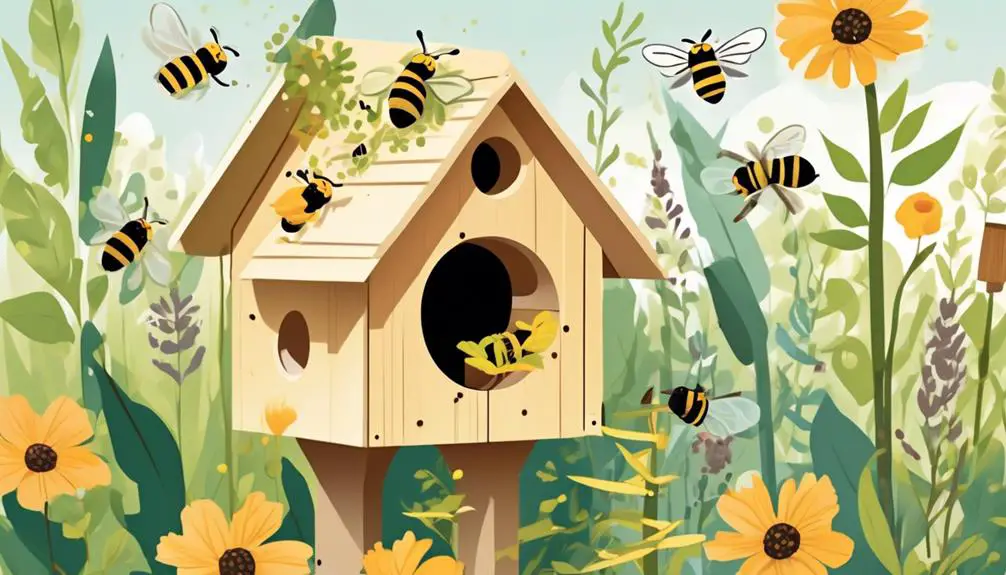
How to Attract Leaf Cutter Bees
If you're thinking about inviting nature's little gardeners, namely leaf cutter bees, into your yard, you're on the right track. They're not only fascinating creatures to observe but also offer significant benefits to your garden.
These small, non-aggressive bees are wonderful pollinators, often outperforming their more famous honeybee cousins.
But attracting them requires more than just a casual interest; you'll need to provide the right environment, food, and shelter.
So, buckle up for a journey of discovery as we discuss how to make your garden a haven for these tiny, hardworking insects.
Key Takeaways
- Leaf Cutter Bees are effective pollinators and can result in higher rates of cross-pollination.
- They are non-aggressive and less likely to sting, making them ideal for urban and suburban gardens.
- Leaf Cutter Bees nest in soft, rotting wood or hollow stems, so providing suitable nesting materials like decaying logs or bee hotels is important.
- Planting native flowering species that bloom at different times throughout the season can provide a continuous food source for Leaf Cutter Bees and enhance the appeal of your garden.
Understanding Leaf Cutter Bees
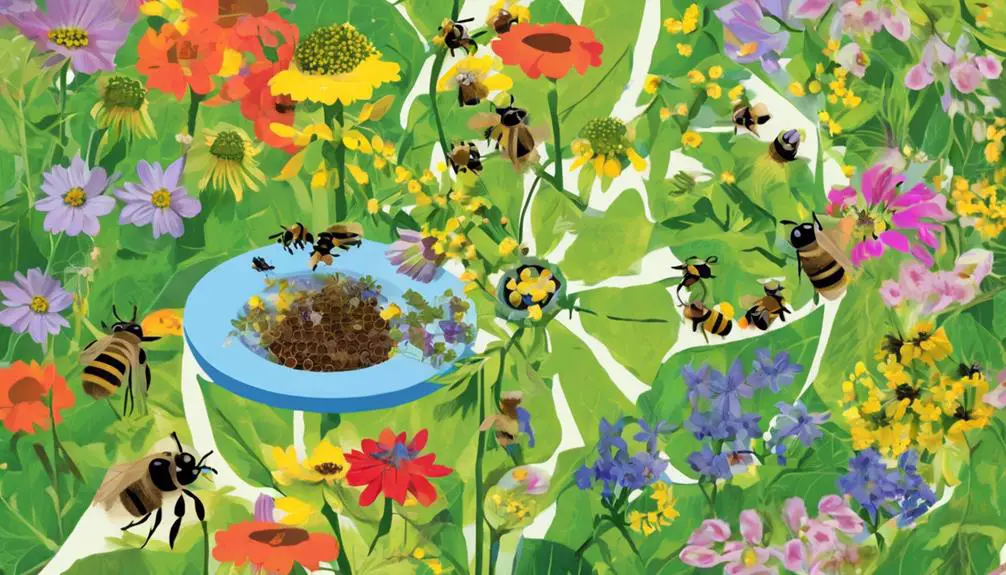
To truly attract Leaf Cutter Bees to your garden, you must first understand these fascinating insects, their behavior, and their preferences.
Leaf Cutter Bees, scientifically known as Megachilidae, are solitary creatures. Unlike honeybees, they don't live in hives or colonies. Each female is a queen of her own nest, and she's also a worker. She's responsible for building nests, laying eggs, and supplying food for her offspring.
The most distinguishing characteristic of these bees is their leaf-cutting behavior. They cut neat, circular pieces from leaves using their strong mandibles and carry them back to their nests. These leaf pieces are used to construct individual cells for their offspring. Each cell is stocked with a mixture of nectar and pollen, upon which an egg is laid.
Leaf Cutter Bees aren't aggressive. They'll only sting if handled or threatened, and their sting is less painful than a honeybee's. They're also excellent pollinators, often more efficient than honeybees. This makes them extremely beneficial to your garden.
Understanding these factors is crucial in attracting and supporting Leaf Cutter Bees. With this knowledge, you're equipped to create an environment that caters to their needs.
Benefits of Attracting These Bees
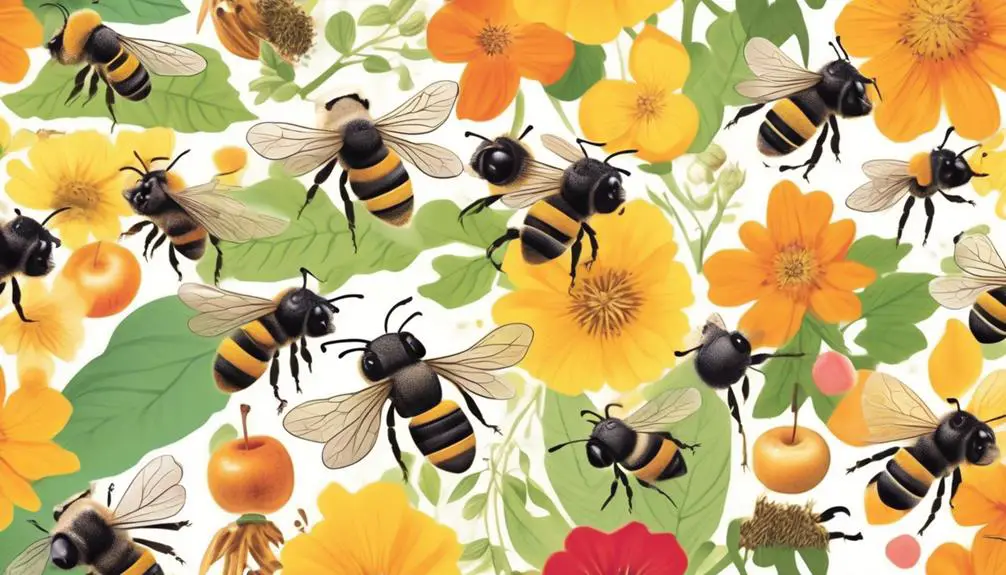
Now that you're familiar with the nature and habits of Leaf Cutter Bees, it's essential to highlight the numerous benefits they can bring to your garden.
One key advantage is their role as effective pollinators. Unlike honeybees that use a wet method of pollen collection, Leaf Cutter Bees employ a dry method, gathering pollen on their abdomen, which results in a higher rate of cross-pollination. Your floral diversity and garden productivity will significantly increase with their presence.
Also, Leaf Cutter Bees are non-aggressive. They're less likely to sting and, when they do, it's far less painful than a honeybee's sting. This makes them ideal for urban and suburban gardens where human interaction is high.
Plus, they're solitary bees, which means they don't build communal hives. Instead, they nest in small holes often in wood or plant stems, making them easy to host.
Building a Bee-Friendly Habitat
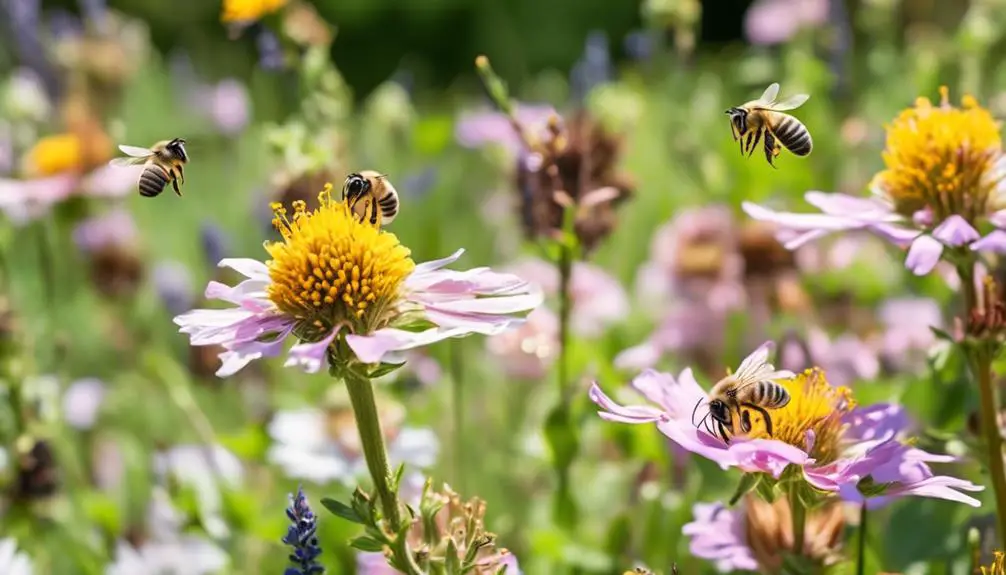
Creating a bee-friendly habitat involves understanding their nesting habits and providing appropriate resources, which can significantly boost their population in your garden. Leaf cutter bees nest in soft, rotting wood or hollow stems, so ensure you've got a supply of these in your garden. Remember, they're solitary creatures and prefer to nest alone.
Consider building a bee hotel with different-sized holes to accommodate various types of leaf cutter bees. It's crucial to keep your garden pesticide-free, as these chemicals can be harmful, even fatal, to bees.
Here's a table to guide you on what to include in your bee-friendly garden:
Habitat Element | Why It's Important | How to Implement |
|---|---|---|
Rotting Wood/Hollow Stems | Nesting Material | Leave decaying logs, or install bee hotels |
Native Plants | Food Source | Plant local flowering species |
Pesticide-Free Environment | Safety | Avoid using harmful pesticides |
Providing the Right Plants

Choosing the right plants for your garden is a crucial step in attracting leaf cutter bees, as they're particularly drawn to native flowering species that supply ample pollen and nectar. It's not just about aesthetics, but about creating a sustainable and inviting environment for these beneficial insects.
Leaf cutter bees are especially attracted to plants like asters, daisies, and sunflowers. You'll also want to include plants that bloom at different times throughout the season, ensuring a continuous food source. For instance, spring bloomers like lupines and penstemons can kick-start the attraction, while late-summer to fall bloomers like goldenrod and aster maintain it.
Don't underestimate the importance of providing a variety of plants. Maintaining diversity not only enhances the appeal of your garden to leaf cutters, it also supports a balanced ecosystem. Moreover, certain plants, like the legume family, fix nitrogen in the soil, which promotes overall plant health.
Maintaining Your Bee Garden

Once you've established your garden with the right mix of plants, it's essential to maintain it properly to sustain the leaf cutter bee population. This process involves careful monitoring of the garden's overall health and addressing any issues promptly.
Ensure your plants are well-watered but not waterlogged, as excessive moisture can deter bees. Regularly check for signs of pest infestation or disease, as these can harm your plants and, in turn, the bees who rely on them. If you spot any problems, treat them using organic methods to avoid harming the bees with harsh chemicals.
In addition to this, it's important to let your garden grow naturally. This means refraining from over-pruning or tidying up too much. Leaf cutter bees need leaves and stems for their nests, so leave some plants a bit wild.
Conclusion
In conclusion, attracting leaf cutter bees isn't complex. By understanding these bees, appreciating their benefits, and creating a bee-friendly habitat, you're well on your way.
Providing the right plants and maintaining your bee garden are key. Remember, these bees are our partners in maintaining a balanced ecosystem. So, don't shy away from making your garden a haven for these industrious, beneficial insects.
In the end, you'll reap the rewards of a thriving, vibrant garden.


